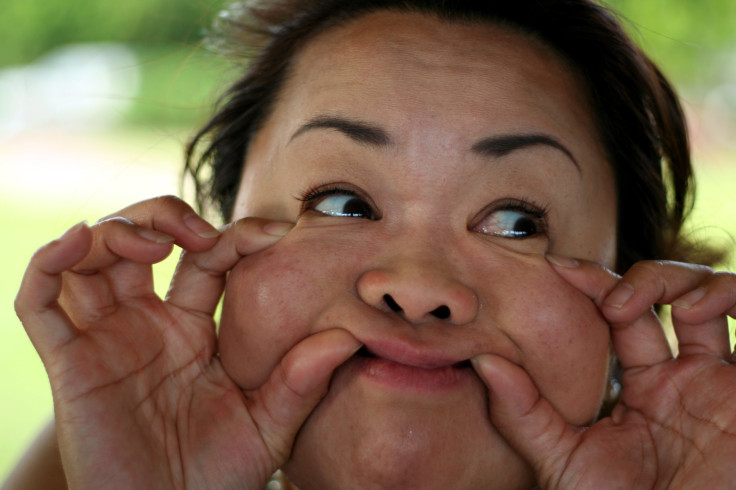Fat Face Weight Loss: The Exact Weight A Person Needs To Lose To Look Attractive And Healthy

Suck in your cheeks — the fat on your face may influence how attractive others perceive you to be. Psychology researchers at the University of Toronto honed in on people’s faces to figure out how adiposity, or fat, affected attractiveness. Their findings, published in the journal of Social Psychological and Personality Science, demonstrate that even though humans can identify weight loss on another person’s face, it takes twice as much for them to look attractive.
"Women and men of average height need to gain or lose about 8 and 9 pounds for anyone to see it in their face, but they need to lose about twice as much for anyone to find them more attractive," said Nicholas Rule, the head of Social Perception and Cognition research at the University of Toronto, in a press release.
To pinpoint the exact amount of weight a person would have to lose before someone else finds them more attractive, Rule and his research team created a photo collection of both men’s and women’s faces. All were between 20 and 40 years old. Participants were asked to maintain a neutral facial expression with no piercings or other jewelry on, and if they had long hair, they were asked to pull it back.
Next, researchers edited the photos so each face had a number of photos showing a range of weights. Participants were asked to randomly draw two photos from a pile and label which one they thought looked heavier. They were then asked which photo they found more attractive. The weights in the photos were also labeled using body mass index (BMI), which is a measure of body fat based on height and weight. The numbers were calculated and placed into BMI categories ranging from underweight (less than 18.5) to obese (30 or greater).
After several rounds of comparing photos, researchers found there needed to be at least a 0.89 change in BMI for someone to see a difference in weight. But in order to alter a person’s perception of attractiveness, BMI had to change nearly twice as much. Men needed an average decrease of 1.74 in their BMI to appear more attractive, while women needed an average drop of 1.59 in their BMI. This translated to a drop of roughly 14 pounds in women and 18 pounds in men who were average height.
"The difference between the groups suggests women's facial attractiveness may be more sensitive to changes in weight," Rule said. "This just means women attempting to lose weight need to shed slightly fewer pounds than men for people to find them more attractive."
The researchers based their recommendations on BMI rather than pounds because they wanted the study’s results to be applicable to people of all weights and heights. Instead of a person below average height trying to lose as much weight as a person above average height, they focused on what’s best for individual stature — not a one-size-fits-all approach. Aside from evaluating attractiveness, researchers discovered facial fat could be used as a quick way to assess how unhealthy a person becomes depending on how much weight they carry on their face.
"It is a robust indicator of one's health," Rule said. "Increased facial adiposity is associated with a compromised immune system, poor cardiovascular function, frequent respiratory infections, and mortality. So, even a small decrease can improve one's health."
In some cases, however, weight loss or being healthier isn't an incentive for a person to lose weight. Sometimes, they just want to lose weight to appear more attractive to a potential partner, or for the sake of their own self-esteem. Consequently, improved health merely becomes a bonus to weight loss.
The study’s co-author Daniel Re, a postdoctoral fellow at the University of Toronto’s Psychology Department, said that’s exactly what the findings led the research team to conclude: “When it comes to incentives for weight loss,” he said, “some people are more motivated to look attractive than to improve their health.”
Source: Rule N and Re D, et al. Heavy Matters: The Relationship Between Just Noticeable Differences in Perceptions of Facial Adiposity and Facial Attractiveness', published in Social Psychological and Personality Science. 2015.



























